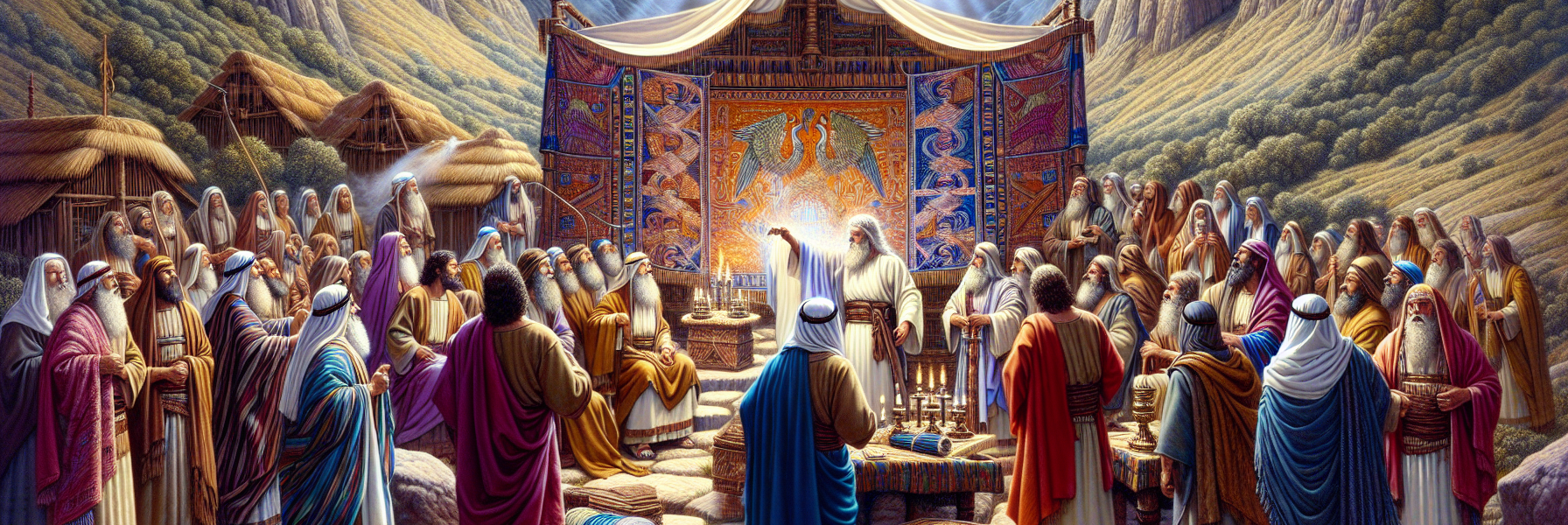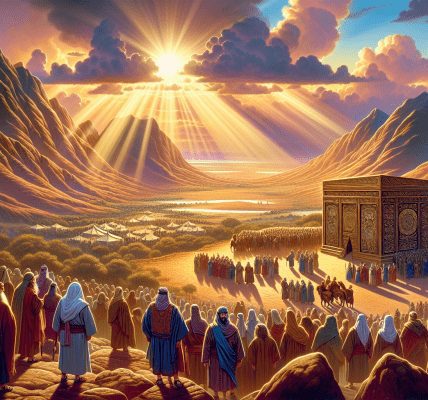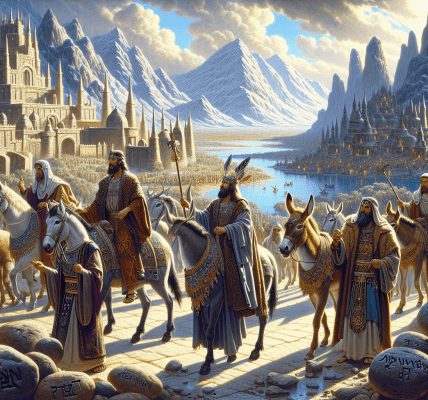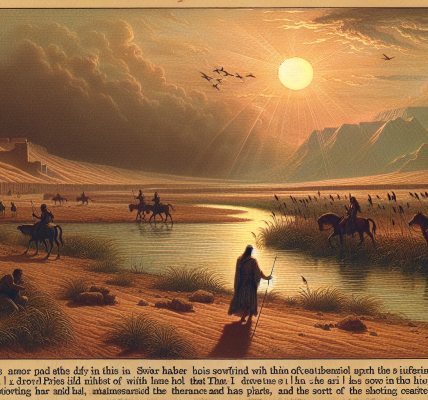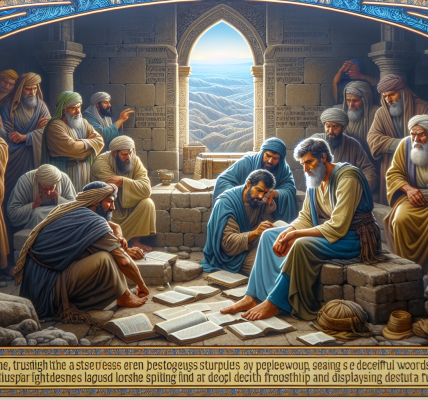**The Divine Blueprint: Crafting the Tabernacle’s Sacred Curtains**
The Lord spoke to Moses on the slopes of Mount Sinai, His voice like the whisper of the wind yet as firm as the mountain itself. The Israelites had been freed from Egypt, their chains broken by the mighty hand of God, and now they stood at the threshold of a new covenant. The Lord desired to dwell among His people, not in a distant palace of stone, but in a sanctuary woven with reverence and holiness—a Tabernacle, a tent of meeting where heaven touched earth.
### **The Fine Linen and the Colors of Majesty**
The Lord commanded Moses with meticulous detail: *”Moreover, you shall make the tabernacle with ten curtains of fine twined linen and blue and purple and scarlet yarns; you shall make them with cherubim skillfully worked.”* (Exodus 26:1).
And so, the craftsmen of Israel set to work. The finest linen, white as the first light of dawn, was carefully spun into threads so delicate they shimmered like morning dew. But this was only the beginning. Into this linen were woven strands of three sacred colors:
– **Blue**, like the vault of heaven, a reminder of God’s celestial throne, boundless and eternal.
– **Purple**, the hue of kings, a sign of the Messiah who would one day reign in glory.
– **Scarlet**, deep and rich as the blood of the Passover lamb, foreshadowing the sacrifice that would redeem mankind.
Skilled hands, filled with the Spirit’s wisdom, embroidered the linen with figures of cherubim—mighty guardians of the divine presence. Their wings stretched across the fabric, their faces a blend of lion and eagle, man and ox, symbols of strength, swiftness, wisdom, and service. Each stitch was an act of worship, each thread a testament to the holiness of the God they served.
### **The Coupling of the Curtains**
The Lord instructed that the curtains be joined together in sets of five, forming two large sections. Golden clasps, pure and untarnished, linked them so that the Tabernacle would be one unified dwelling. *”You shall make fifty loops on the edge of the curtain that is outermost in one set, and fifty loops on the edge of the curtain that is outermost in the second set.”* (Exodus 26:5).
The artisans worked with reverence, knowing that these loops and clasps were not mere fastenings but symbols of unity—just as Israel was to be one people under God, so too were these curtains bound together in perfect harmony. The gold gleamed in the sunlight, a reflection of divine glory, ensuring that no seam would be seen, no division apparent. The Tabernacle would be seamless, just as God’s plan was without flaw.
### **The Coverings of Goats’ Hair and Ram Skins**
Yet the beauty of the inner curtains was not left exposed to the harshness of the wilderness. Over them, Moses was to place a second layer: eleven curtains of goats’ hair. These were coarser, darker, a humble shield over the splendor beneath. The number eleven—one more than the ten linen curtains—ensured that no part of the inner sanctuary would be left uncovered.
And over this, a third layer: ram skins dyed red, a barrier against wind and rain, a protection that spoke of sacrifice, for the ram had long been an offering of consecration. Finally, atop all these, a covering of fine leather, likely from the hides of sea cows (dugong or porpoise), durable and weatherproof, shielding the holy place from the elements.
### **The Framework and the Veil**
Beneath these coverings stood the acacia wood frames, overlaid with gold, standing firm like the righteous who trust in the Lord. The boards were fitted into silver bases, symbols of redemption, for silver was the metal of atonement. And within this sacred space hung the veil, a masterpiece of the same blue, purple, and scarlet, embroidered with cherubim, separating the Holy Place from the Most Holy Place—where the Ark of the Covenant would rest, and where God’s presence would dwell above the mercy seat.
### **A Dwelling Fit for the King of Kings**
As the craftsmen labored, they did not merely construct a tent; they wove a parable of God’s relationship with His people. The outer coverings spoke of humility and protection, the inner curtains of beauty and holiness, and the veil itself a reminder that access to God was not yet fully open—until the day when the true High Priest, Jesus Christ, would tear it from top to bottom.
And so the Tabernacle rose in the wilderness, a fleeting shadow of the eternal dwelling God would one day establish—not in fabric and gold, but in flesh and spirit. For the God who commanded the making of these curtains would one day clothe Himself in human form, and His glory would shine not behind a veil, but in the face of the Savior.
Thus, every thread, every loop, every golden clasp whispered of a greater story—the story of a God who longs to dwell with His people, yesterday, today, and forever.
